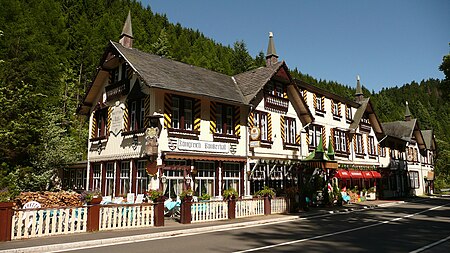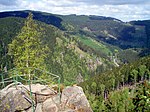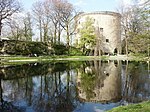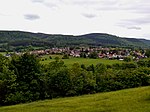Romkerhall
Buildings and structures in the HarzGoslar (district)Waterfalls of Germany

Romkerhall (also frequently called Romkerhalle) is a popular tourist destination on the River Oker in the Harz Mountains of Germany. There is a public car park here as well as a hotel and restaurant opposite the Romkerhall Waterfall. Romkerhall lies within the unincorporated area of Harz in the Lower Saxon county of Goslar in the Harz Mountains. The hotel and waterfall form a small tourist attraction which is marketed as the "Kingdom of Romkerhall - the smallest kingdom in the world!" (German: "Königreich Romkerhall − das kleinste Königreich der Welt!")
Excerpt from the Wikipedia article Romkerhall (License: CC BY-SA 3.0, Authors, Images).Romkerhall
Okertal,
Geographical coordinates (GPS) Address Nearby Places Show on map
Geographical coordinates (GPS)
| Latitude | Longitude |
|---|---|
| N 51.859444444444 ° | E 10.471388888889 ° |
Address
Okertal
Okertal
38644
Lower Saxony, Germany
Open on Google Maps











